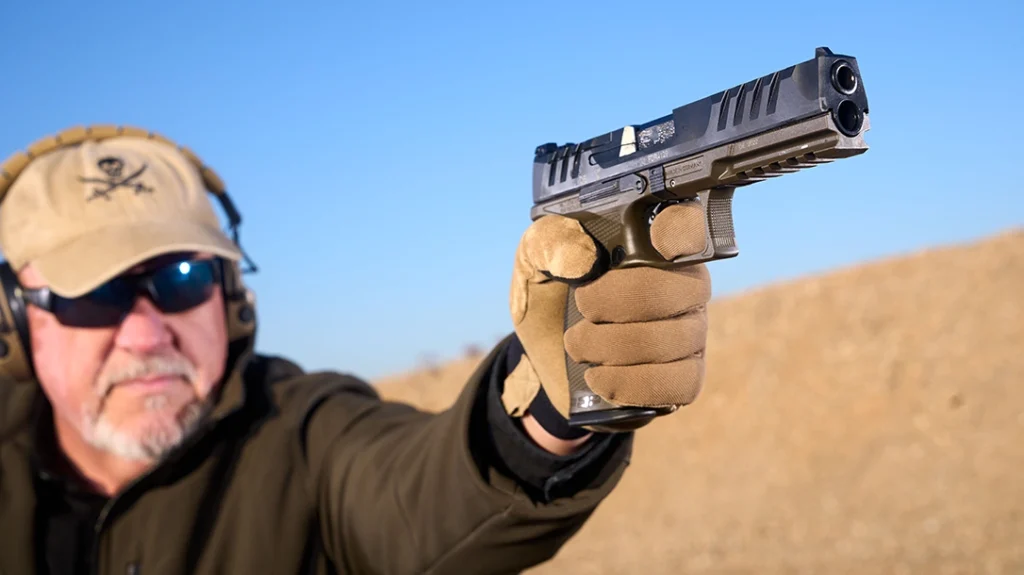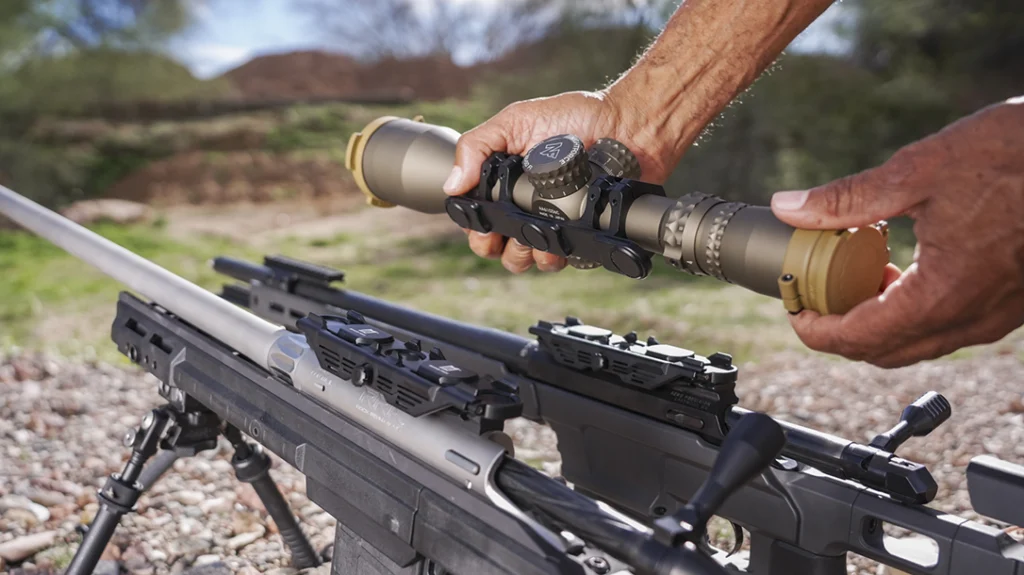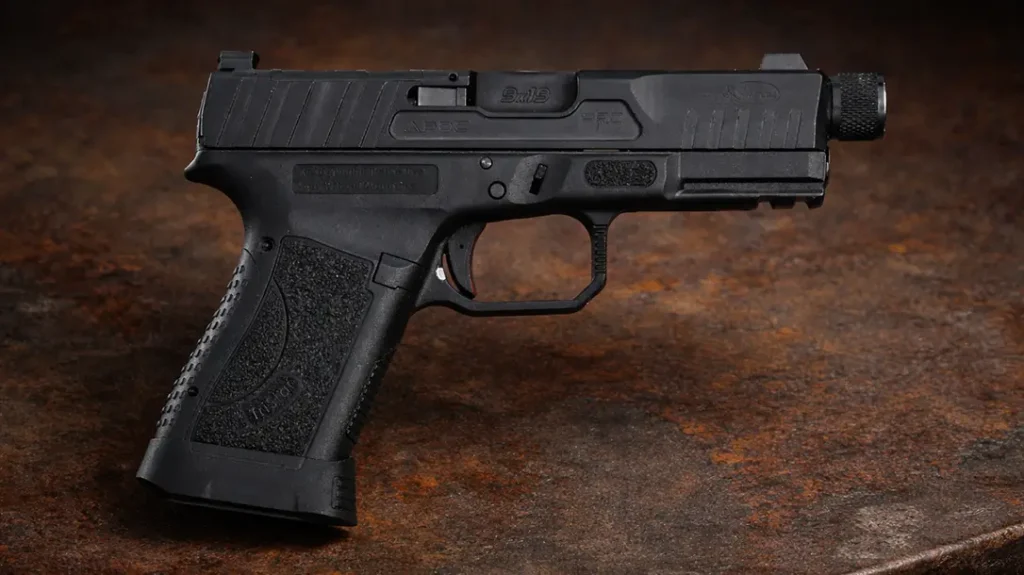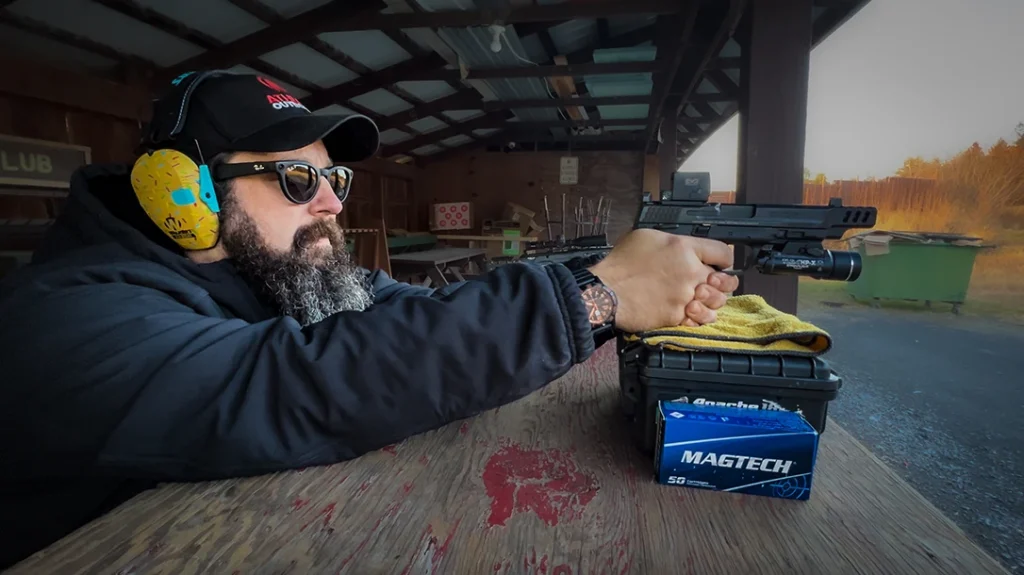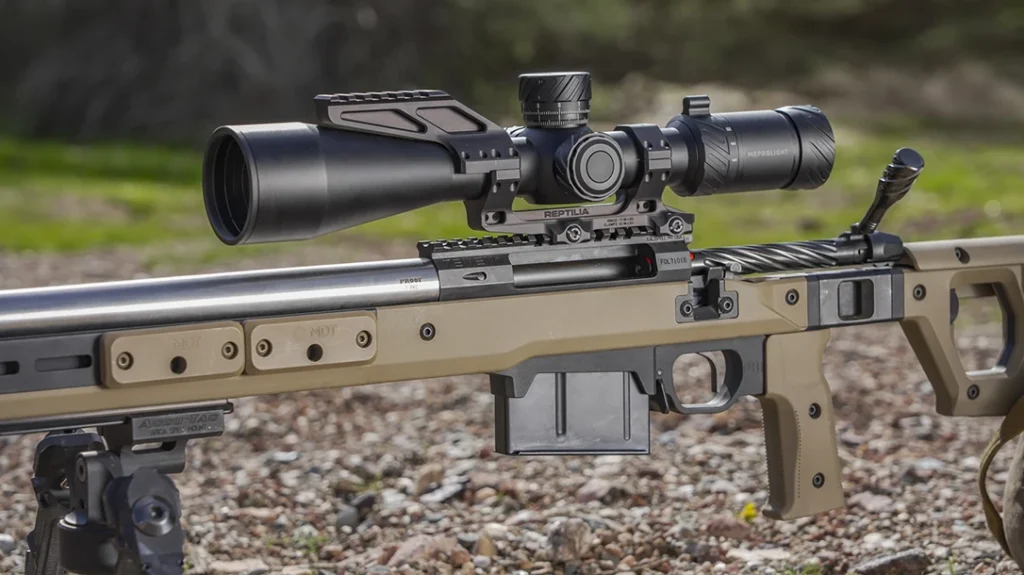The struggle is real. For anyone who is committed to mastering firearms, the struggle to hone accuracy seems to be a never-ending challenge. We can go down the rabbit hole a little deeper and talk about shooting specific guns and the challenges we face with them. Specifically, we will take a deep dive into steps you can take to dial in your accuracy with a handgun.
7 Steps to Mastering Handgun Accuracy
Of all of the firearms in our arsenal, the handgun can be the most challenging to master. It is small with a short sight radius and generally has a trigger that requires more pressure than the gun weighs. Almost always found with “open sights,” it requires mastering many moving parts.
The handgun is also the most commonly found weapon in America and, as such, is the center of countless discussions on how to improve accuracy. With so much to wade through, it is time to look at a few simple things that anyone can do to improve their overall accuracy with a handgun.
Advertisement — Continue Reading Below
To make it easier to understand, I break it into the three basic areas that melt together for accurate shots. Likewise, I include some drills within these areas to improve overall handling.
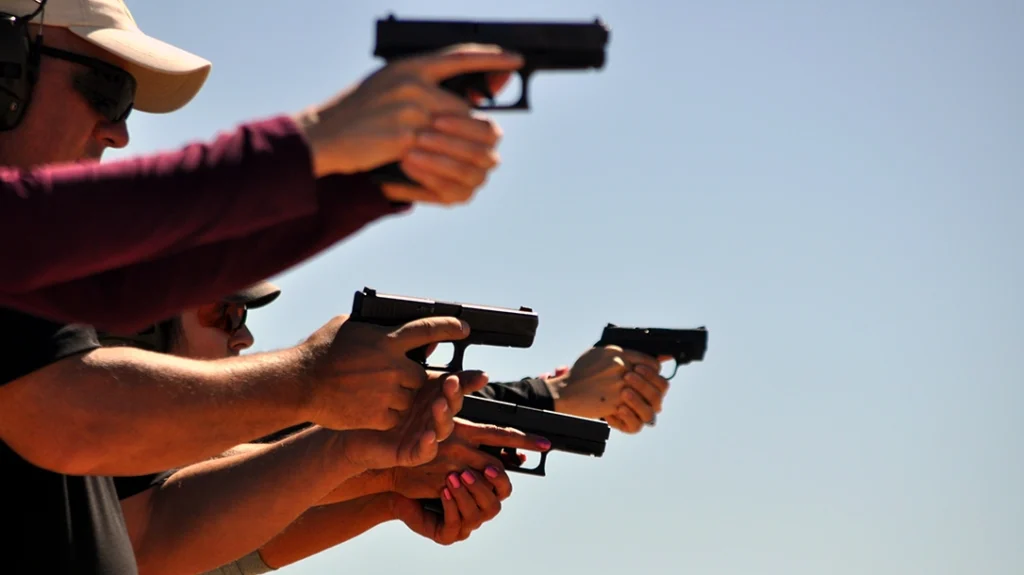
Trigger Control
First up in our main trifecta of things to focus on, we have trigger control. We often hear this phrase used when discussions of accuracy arise. Rarely, however, is it given sufficient attention.
Advertisement — Continue Reading Below
The truth is that pistols, for the most part, are accurate. It’s our manipulation of the weapon that interferes with its ultimate capability. Here are some solid trigger control drills to help you improve.
Brass on the Front Sight Drill
This drill is always easier with the help of a partner. Even if you don’t have one, you can carefully set it up.
Unload your weapon and remove the magazine. Reset the action on your pistol and have your partner balance a piece of fired brass on the front sight. Now, execute a smooth, clean press of the trigger.
Advertisement — Continue Reading Below
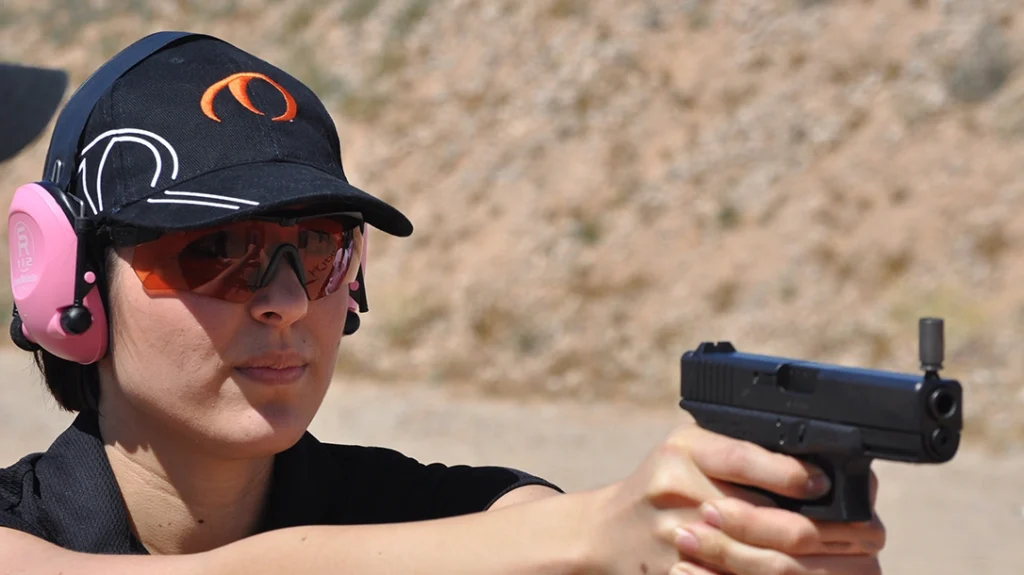
If you do this correctly, the front sight will not dip or move, and the case will stay in place. If the brass falls off, you are generally jerking the trigger and causing movement in the gun. That movement translates into missed shots.
The key to keeping the brass steady is a smooth, continuous trigger press with a clean “break” at the end.
Advertisement — Continue Reading Below
Keep the Slack Out
The more we move the trigger, the higher the probability that we will miss our shot. Trigger press is composed of three stages:
- Slop—The distance the trigger travels freely to the rear before you encounter resistance.
- Slack—The distance the trigger will still travel while under tension prior to firing.
- Shot—Where the trigger finishes its’ travel and ultimately fires the weapon.
In our initial press of the trigger, we will experience all three stages of the trigger motion. However, after the initial press, the trigger will reset. The distance required for reset generally takes it only as far as our “slack” point. Do not allow the trigger to travel any further forward than is necessary.
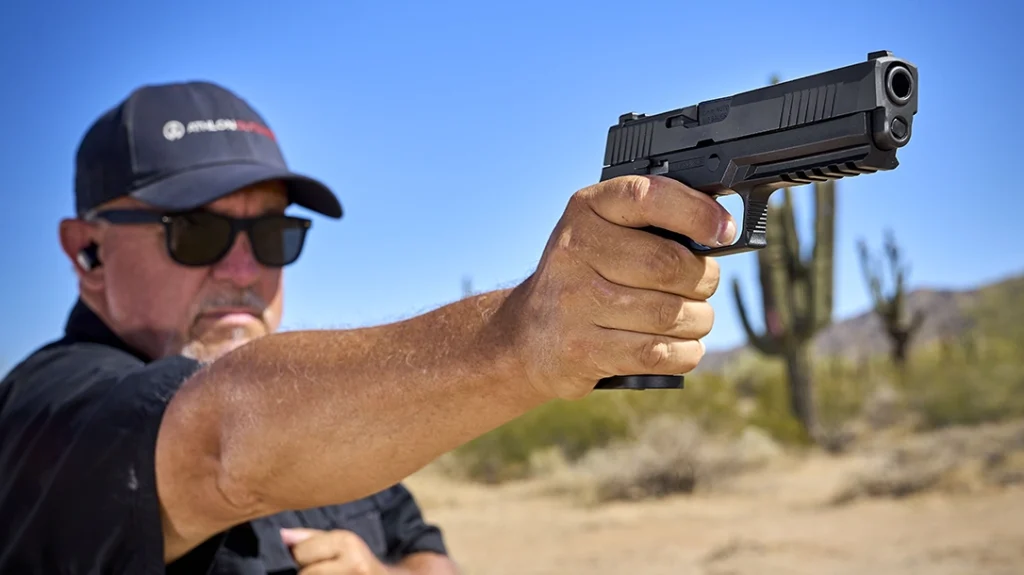
Advertisement — Continue Reading Below
A great drill for this is to empty your weapon and press the trigger. With your support side hand, rack the slide, and as it is moving forward, relax your trigger finger. The tension of the trigger will push forward and allow it to reset. Only let the trigger move as far forward as it has to.
Having a partner rack the slide for you while you stay pointed in is also very helpful.
Continuous dry practice with this drill will familiarize you with how far your trigger needs to travel. At all costs, we look to avoid letting the trigger move all the way forward, and even worse, our trigger finger comes off. This generally results in a “slap” of the trigger on subsequent shots and will interfere with accuracy.
Advertisement — Continue Reading Below
Sight Picture and Alignment
The last part of our accuracy formula looks at sight picture and alignment. There are many theories and methods of shooting when it comes to the world of sights.
At the most fundamental and reliable level, though, we look to align the sights on target while intently focusing on the front sight. The rear sights should be slightly blurry, as should the target, while the front sight should be crystal clear.
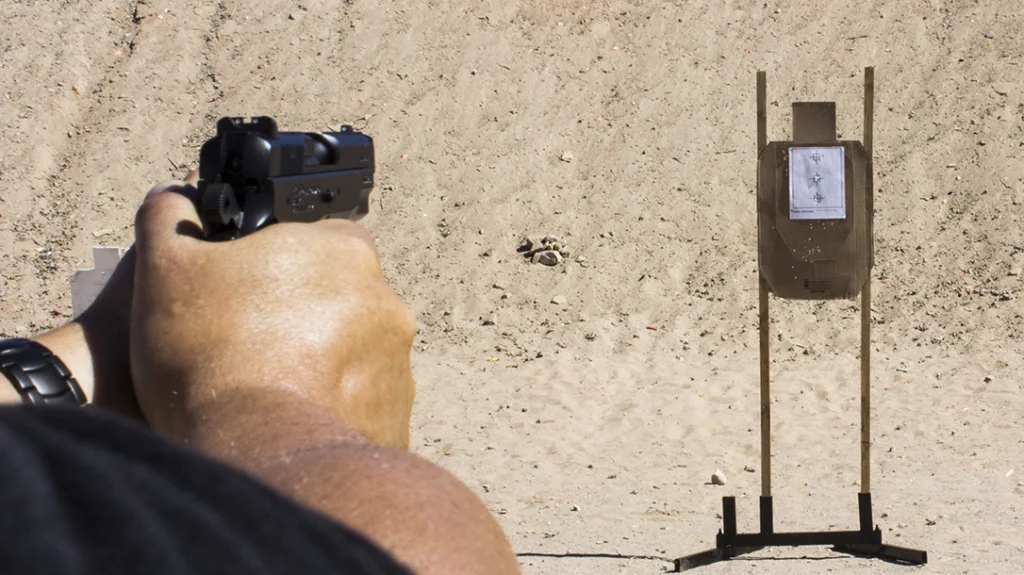
Advertisement — Continue Reading Below
Follow Through
Part two of our accuracy formula looks at follow-through. Follow-through is the act of maintaining a steady platform to send follow-up shots on target.
The challenge faced comes in the way of anticipation or flinching. Especially true with newer shooters, the anticipation of the next shot can cause a flinch response to the weapon firing. This causes muzzle dip and is never helpful to accuracy.
All Together Now
The goal is always to bring these components together. Unless you are a static bull’s-eye shooter, there will be many moving parts to making a shot.
Advertisement — Continue Reading Below
A drill designed to start mixing components without overwhelming yourself is the Ragged Hole Drill.
Ragged Hole Drill
The ragged hole drill is another classic. From six yards, you will slow fire five rounds into a single point on your target. Do your best to focus on a small portion of the target. Better yet, get a target that has one to two-inch dots on it as focal points.
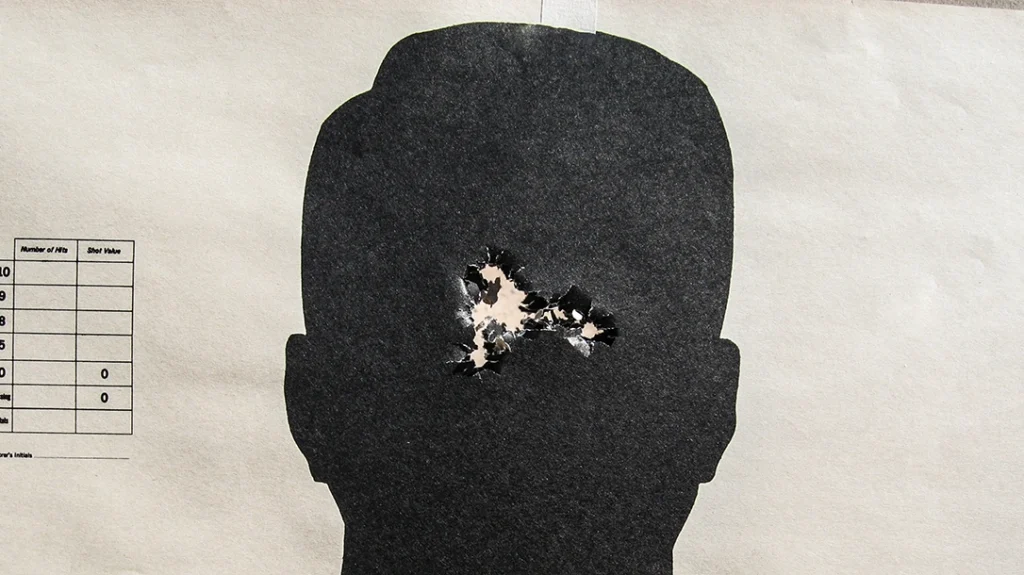
Take your time and use the exact same point of aim each time. Do not chase your shots or try to make corrections. If you manage your trigger and sights well, you should end up with a single ragged hole. If your shots are spread out, it is a sign that you need to polish up on one or more of the basics.
Handgun Accuracy Requires Patience and Practice
Shooting a handgun can be a frustrating challenge. One minute, you are shooting bull’s eyes, and the next, you are off. As with all shooting, it always comes back to the fundamentals.
By practicing these drills, you can improve individual portions and ultimately bring them all together. In the end, like all complex motor skills, shooting is a perishable skill. Practice must be ongoing, but the fruits of our labor will make it worth our time!
